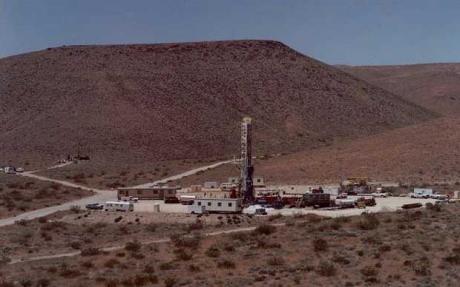
The U.S. Nuclear Regulatory Commission (NRC) published the final two of a five-volume series of its safety evaluation report for the Yucca Mountain nuclear waste repository.
Each volume covered different safety reviews of the repository. Volume 1 covered General Information, Volume 2 was Repository Safety Before Permanent Closure, Volume 3 covered Repository Safety After Permanent Closure, Volume 4 was on Administrative and Programmatic Requirements, and Volume 5 was on Proposed Conditions on the Construction Authorization and Probable Subjects of License Specifications. The NRC staff concluded that the U.S. Department of Energy (DOE) could not move forward with building a repository at the site due to a lack of land and water rights that DOE had not obtained, but that DOE had met any other safety requirements to build a repository.
Despite the NRC’s findings, many feel strongly one way or the other on whether the site should be built. The Nuclear Waste Strategy Coalition (NWSC) released a statement backing the completion of the SER and saying that the government needs to stop delaying the project. On the other hand, Nevada Senator Harry Reid said, “This project will never see the light of day and everyone should accept that and move on,” while a DOE spokesperson said “Secretary Ernie Moniz has consistently said Yucca Mountain is not a workable solution.”
DOE first submitted its application for Yucca Mountain in June 2008. NRC staff published Volume 1 in August 2010, but then the DOE withdrew its application and Congress stopped appropriating funds for NRC’s review. The NRC then closed out its application review.
The U.S. Court of Appeals for the District of Columbia ruled in August 2013 that the NRC had to resume the licensing process using currently appropriated funds from the Nuclear Waste Fund. The NRC then published Volume 3 the following October. Volumes 2 and 5 were released at the end of January.
The Nuclear Energy Institute (NEI) said in a statement that the Atomic Safety and Licensing Board (ASLB) will need to provide further review of the licensing process.
“The ASLB proceeding will provide further scrutiny of both DOE’s safety analysis and NRC’s safety evaluation with involvement by the state of Nevada and other key stakeholders,” NEI said. “If this proceeding results in a construction authorization, DOE may begin building the repository. However, the Energy Department will still have to seek subsequent licensing decisions from NRC to begin receiving radioactive materials at the repository.”
NEI also said that the completion of the SER was a major milestone that proved the repository could be safely built.
“NRC’s scientific and technical experts have determined that DOE has met the Commission’s regulatory requirements, with the exception of the administrative items and conditions identified,” NEI said. “Most importantly, these independent experts have agreed with DOE’s conclusion that the proposed repository will be capable of safely isolating used nuclear fuel and other high level radioactive wastes for the 1 million-year period specified in the regulations and that the Yucca Mountain repository design will be capable of assuring operational safety.”
Katrina McMurrian, Executive Director of NWSC, said that, despite what those against Yucca Mountain have said, the law needs to be followed.
“We understand that there will always be some not on board, but we have to rely on what Congress passed, which is still the law,” McMurrian said.
McMurrian was referring to the Nuclear Waste Policy Act
of 1982, and later amended in 1987, which designated Yucca
Mountain as the nation’s nuclear waste repository to dispose
of high-level radioactive waste and spent nuclear fuel.
McMurrian acknowledged the rights of critics and their
elected officials to oppose efforts to move forward on the
Yucca Mountain project.
“Still, the nation needs a repository,” McMurrian said, “and Congress designated Yucca Mountain to meet that need.”
She added, “Federal law lays out a process for determining whether Yucca Mountain should be completed after an extensive scientific review and adjudicatory proceeding. The SER was a major component of the process, but more work lies ahead.”
McMurrian said she hopes the NRC will continue the next steps in licensing Yucca Mountain. However, the NRC has said that it did not have enough funds to complete the license application review.
“If Congress will appropriate the money for the NRC’s review, the NRC has said it will follow the law,” McMurrian said. “We just want the federal government, particularly those at the NRC and DOE with a key part to play, to get on with it. Electric consumers who have funded this work deserve an answer on Yucca Mountain and a solution to the urgent nuclear waste problem confronting this country.”
The NEI agrees. “Congressional action is necessary to fund NRC and DOE for the next step in the licensing process and Congressional action is necessary to secure the land rights before construction begins,” the statement read. “If the land and water rights are not secured by the time NRC completes its review, the construction authorization issued by NRC will be contingent upon the securing of the land and water rights.”
The completion of the SER is only one step in the licensing process. The DOE must now file a supplement to its environmental impact statement, and there must be hearings on contentions in the adjudication and NRC review before a license can be granted.
To download all five volumes, click here.
Subscribe to Nuclear Power International magazine
Copyright © 2014: PennWell Corporation Subscribe to http://www.power-eng.com
http://www.power-eng.com/articles/2015/01/what-s-next-for-yucca-mountain-repository.html